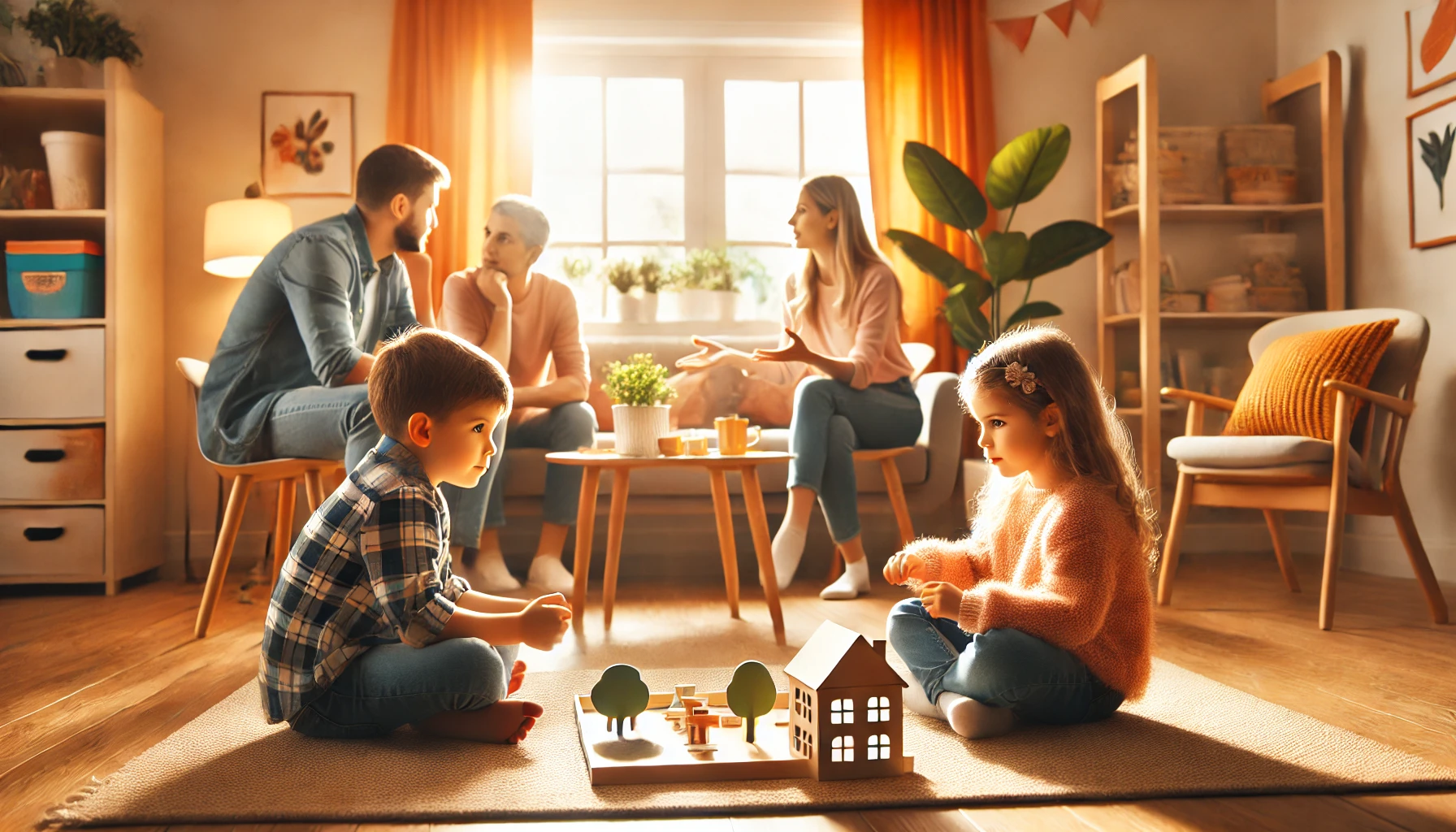How to Teach Young Children About Problem-Solving in Social Situations
Social problem-solving is an important skill that helps children navigate friendships, resolve conflicts, and interact with others in a positive way. Teaching young children how to think through social challenges, communicate effectively, and find fair solutions prepares them for success in school and life. Parents can foster these skills through role-playing, guided discussions, and everyday experiences. In this article, we’ll explore practical ways to teach problem-solving in social situations.
Why Teaching Social Problem-Solving is Important
- Encourages independence – Helps children resolve conflicts on their own.
- Develops communication skills – Teaches kids how to express themselves clearly.
- Builds emotional intelligence – Helps children recognize and respond to emotions.
- Reduces frustration and conflicts – Encourages peaceful solutions to disagreements.
- Prepares for teamwork and friendships – Teaches cooperation and compromise.
1. Teach a Simple Problem-Solving Process
Helping children break down problems into steps makes social situations easier to handle.
Activity Idea:
- Use a four-step approach:
- Identify the problem – “What’s wrong?”
- Think of solutions – “What can we do to fix this?”
- Choose the best option – “Which solution is fair to everyone?”
- Try it and reflect – “Did that work? If not, what else can we try?”
- Use real-life situations like sharing a toy or deciding what game to play to practice this approach.
What Kids Learn:
- How to approach problems calmly and logically
- The importance of thinking before reacting
- That there are multiple ways to solve a problem
2. Use Role-Playing to Practice Social Challenges
Acting out situations helps children develop confidence in solving problems.
Activity Idea:
- Role-play common social challenges, such as:
- Two kids wanting the same toy
- A friend who feels left out
- What to do if someone is being unkind
- Take turns playing different roles and discuss fair solutions.
What Kids Learn:
- How to handle real-life situations with confidence
- The importance of seeing different perspectives
- Strategies for resolving conflicts peacefully
3. Encourage “Use Your Words” Instead of Reacting Emotionally
Helping children express their feelings with words reduces frustration and misunderstandings.
Activity Idea:
- Teach phrases like:
- “I feel upset because…”
- “Can we find a way to share?”
- “I don’t like that, but let’s figure something out.”
- Use puppets or stuffed animals to act out respectful conversations.
What Kids Learn:
- How to express emotions in a healthy way
- The importance of talking instead of acting out frustrations
- That communication leads to better understanding
4. Read Books About Social Problem-Solving
Stories help children see examples of conflict resolution in action.
Activity Idea:
- Read books like Howard B. Wigglebottom Learns to Listen or The Recess Queen.
- Pause and ask, “What could the character have done differently?”
- Discuss how the story’s lesson can apply to real life.
What Kids Learn:
- How characters handle social challenges
- How kindness and communication solve problems
- That everyone faces conflicts but can learn from them
5. Encourage Taking Turns and Fair Play
Practicing fairness helps children learn cooperation and patience.
Activity Idea:
- Use a sharing timer when kids want the same toy.
- Play board games that require turn-taking and following rules.
- Praise fairness by saying, “I love how you waited your turn so nicely!”
What Kids Learn:
- The importance of fairness in group settings
- How to be patient and take turns
- That sharing leads to happier playtime
6. Guide Children Through Real-Life Conflicts
Helping children solve problems as they happen teaches valuable life lessons.
Activity Idea:
- If siblings are arguing over a toy, guide them:
- “Let’s talk about how we can solve this together.”
- “Can we take turns or play together?”
- Encourage brainstorming: “What’s another way we can make this fair?”
What Kids Learn:
- How to handle disagreements calmly
- The importance of working together
- That problem-solving is a skill they can practice
7. Teach Empathy to Improve Social Problem-Solving
Understanding others’ feelings helps children make kinder decisions.
Activity Idea:
- Ask, “How do you think your friend felt when that happened?”
- Watch short videos and discuss the emotions of the characters.
- Encourage kindness by saying, “What can you do to help them feel better?”
What Kids Learn:
- How to recognize and respect others’ emotions
- That kindness makes social interactions smoother
- The importance of considering others when solving problems
8. Praise and Reinforce Positive Problem-Solving
Recognizing and encouraging good social skills motivates children to keep practicing.
Activity Idea:
- Say, “I saw how you worked things out with your friend—that was great problem-solving!”
- Keep a “problem-solving star chart” where kids earn stickers for resolving conflicts respectfully.
- Celebrate their success by asking, “How did it feel to solve that problem?”
What Kids Learn:
- That problem-solving is a valuable skill
- How to reflect on their own actions
- Confidence in handling social situations
Final Thoughts
Teaching young children about problem-solving in social situations helps them develop confidence, communication skills, and empathy. By practicing conflict resolution, encouraging emotional expression, and reinforcing fair play, parents can equip children with the tools they need to navigate friendships and group interactions successfully.
